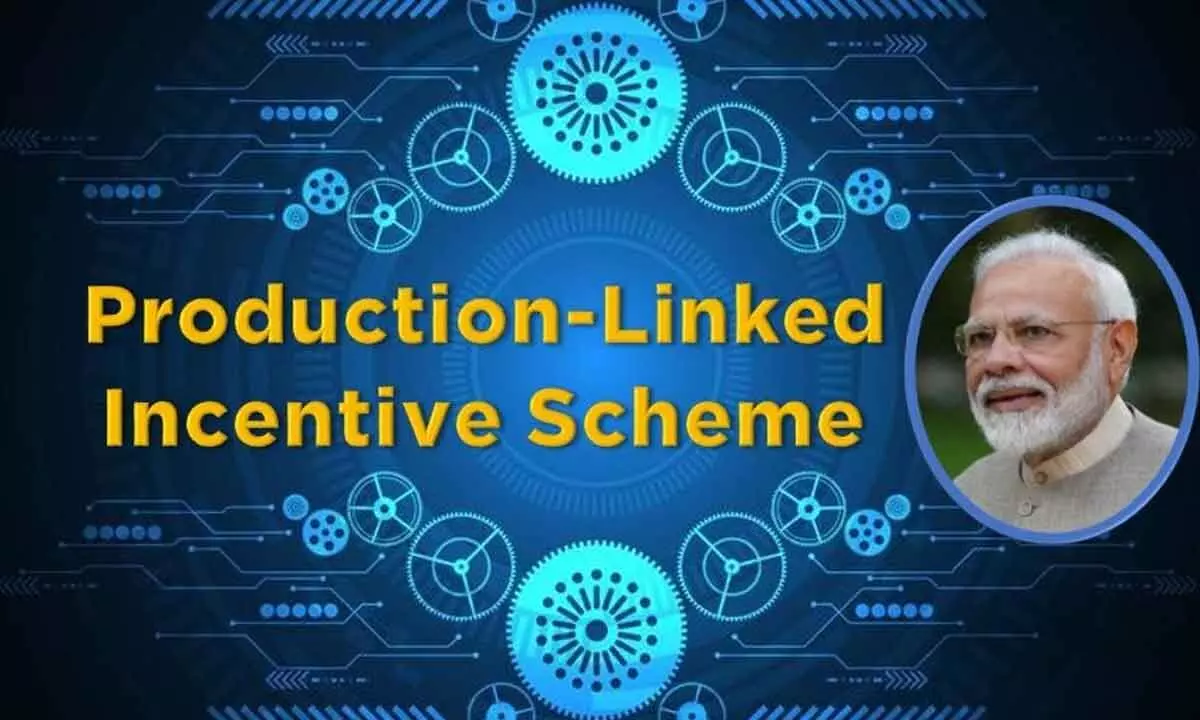PLI scheme gets a thumbs-up from the Indian industry
The PLI Scheme has successful in areas like mobile manufacturing but not in all sectors
image for illustrative purpose

He went on to highlight some lacunae and shortcomings. For instance, the textiles sector involves a lot of job work, but that is not included in investment. Exports have increased by Rs. 3.2 lakh crore, the official release said, adding that incentives worth around Rs. 2,900 crore were disbursed in 2022-23
The government is quite optimistic regarding the Production Linked Incentive (PLI) Scheme for 14 key sectors it announced in April 2021 with an outlay of Rs. 1.97 lakh crore. Over Rs. 95,000 crore of investment was reported till September 2023, which has led to production and sale of Rs. 7.8 lakh crore and employment generation (direct and indirect) of over 6.4 lakh, says an official release. The picture may not be as rosy as the Narendra Modi regime wants us to believe, but the industry views that it was a successful scheme.
The PLI Scheme has been very successful in a few areas like mobile manufacturing but not everywhere, said a representative of a premier business chamber. On a scale from zero to 10, he gives between 7 and 7.5 marks, which is a thumbs-up from the industry.
“It’s a well-thought out scheme, preceded with a lot of consultations,” he said. “The idea was to boost manufacturing in a targeted manner. The choice of sectors was good, with focus on augmenting production volumes, exports and employment generation. The results have been good in sectors like food processing, telecom equipment, and mobiles.”
Others representing industry also have a favourable opinion about PLIs. PHD Chamber of Commerce & Industry assistant secretary general Shalini S. Sharma said, “The immediate impact has been good, and is likely to improve in the future.”
The share of manufacturing in the country’s GDP has not gone up share has not gone up but that is because it’s too early to see the impact of the PLI Scheme, opine industry representatives.
Federation of Indian Micro and Small & Medium Enterprises (Fisme) secretary general Anil Bhardwaj said that the scheme has been successful in a few sectors but it is too early to pass a judgment on its performance. “After the general election, it may get a boost, for an investor thinks of several factors, not just PLIs.”
He is not convinced with the argument that investors would put in money in manufacturing in India just because it is a large market. “One can do business by trading too,” as he puts it
The government did not consider its job done just by announcing the PLI Scheme. It has been proactive and responsive in addressing the issues raised by industrialists, he said, while adding, “We had an internal discussion in August, involving businesspersons. The feeling is good about the scheme and the government’s attitude.”
He went on to highlight some lacunae and shortcomings. For instance, the textiles sector involves a lot of job work, but that is not included in investment. But, he added, the government listens to the concerns of industry.
Exports have increased by Rs. 3.2 lakh crore, the official release said, adding that incentives worth around Rs. 2,900 crore were disbursed in 2022-23. Of the $101-billion total electronics production in 2022-23, smartphones constituted $44 billion, including $11.1 billion as exports.
It is generally believed that success can be made bigger and more widespread.

